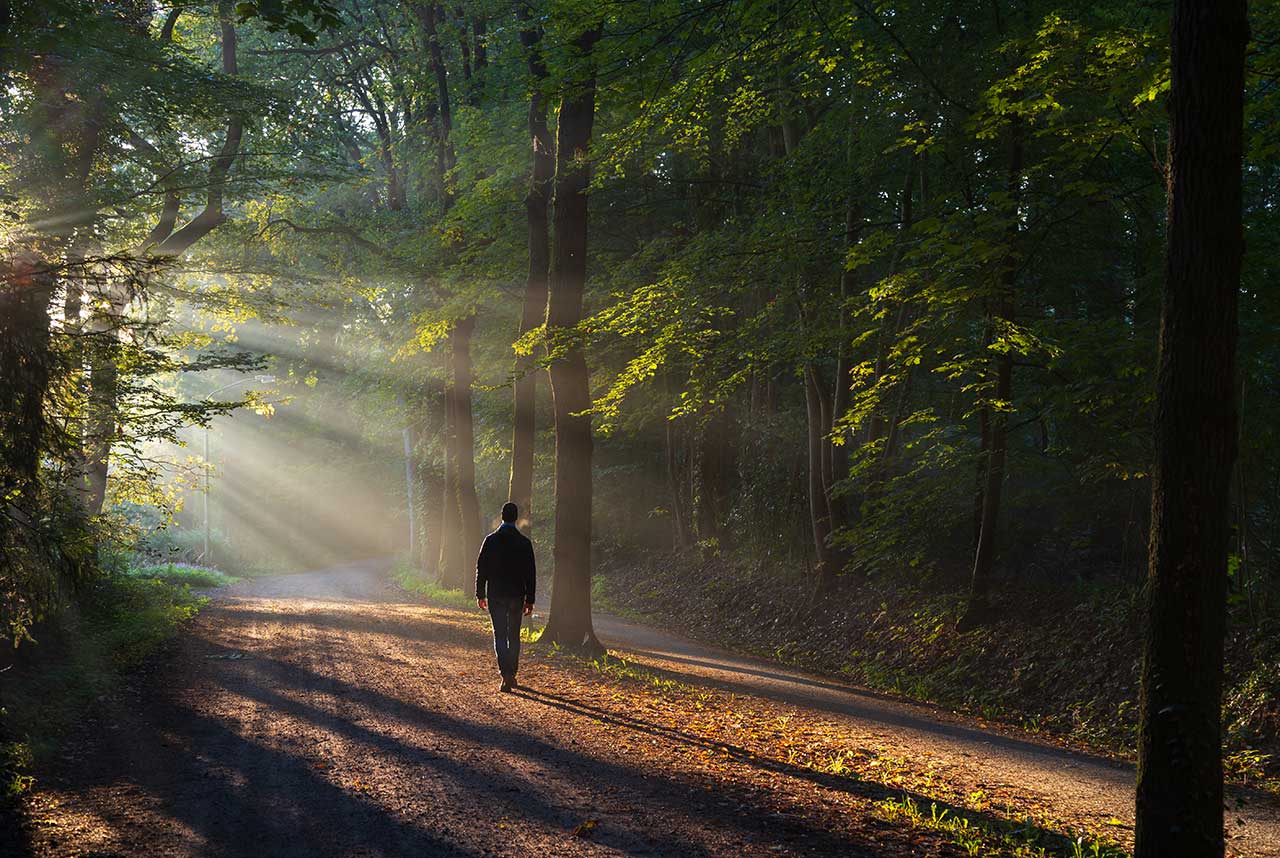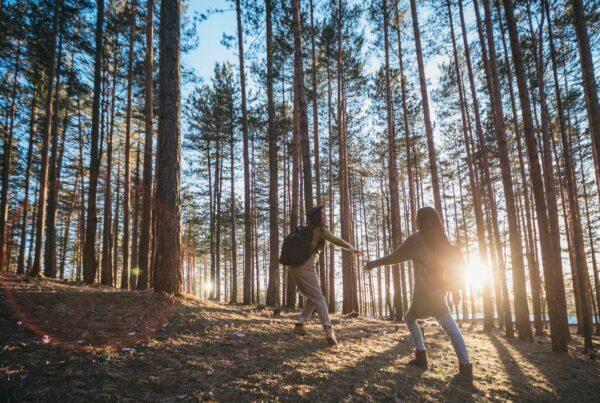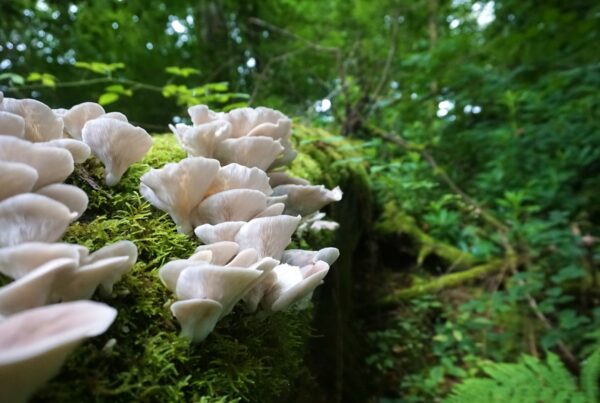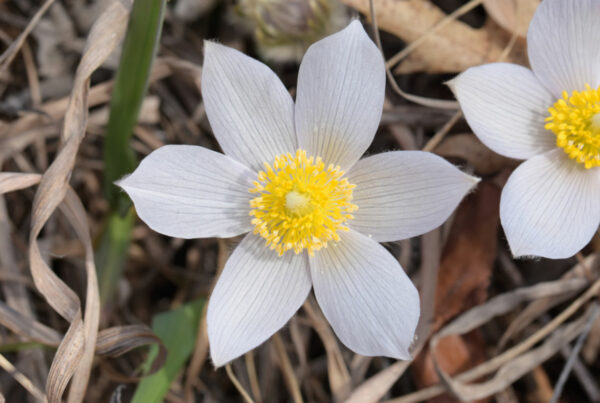One of the biggest misconceptions about meditation is that it has to be practiced sitting down.
While formal sitting meditation works great for some people, many people struggle to stick with it. The beauty of mindful walking meditation is these practices are much more enjoyable for most people and they can also help reverse the negative effects caused by sitting all day.
The reality today in highly-developed countries is we live in the most sedentary culture in human history, where the average person spends around 90% of their waking hours sitting in a chair, on the couch or in a vehicle.
Most of our time sitting is also spent staring at a screen. While the Internet used to be a break from the real world, today the real world is often an escape from the Internet.
So, why not make that escape a mindful walk in your neighbourhood or your favorite local forest?
The Art of Mindful Walking:
“Mindfulness is awareness that arises through paying attention, on purpose, in the present moment, non-judgmentally, in the service of self-understanding and wisdom.”
― Dr. Jon Kabat-Zinn
I have the good fortune to learn mindfulness from Dr. Jon Kabat-Zinn when I was a stressed-out young student at the University of British Columbia in Vancouver.
It completely changed my life and help me manage my tendency toward overthinking, distractibility and unnecessary rumination.
While I practice sitting meditation right after I get up each morning and right before I go to sleep every night, the times when I feel the most effortlessly alive and connected are on my daily mindful walks.
This is when I often feel the deepest sense of awe, gratitude and wonder in my day.
There are lots of different ways you can apply the principles of mindfulness to deepen your connection with nature and make walking a relaxing and awe-inspiring meditative experience.
Here are some mindful walking tips to help you get started:
1. Set a clear intention for your mindful walk:
Before you start your mindful walk, set an intention to be present and fully engaged with the natural world around you. Decide to focus on being aware of all your senses and make a commitment to let go of identification with your thoughts for a period of time.
2. Practice these 3 key mindfulness principles.
The first principle of mindfulness is to practice non-judgement, which means observing and accepting things as they are. The second principle is non-identification, notice how your mind automatically labels everything you see. The third principle is non-resistance, just allow yourself to let go, enjoy and feel the beauty all around you.
3. Explore your senses with childlike wonder.
As you walk, try to engage your different senses and explore with the soft fascination of childlike wonder. Notice the subtle beauty of the colors, shapes, and textures of the plants and trees. Listen to the sounds of the birds singing in the trees. Breathe in the smell of the fresh air and the fragrances of flowers. Notice the breeze on your skin or the texture of the ground beneath your feet as you walk.
4. Stay present and notice how you feel in your body.
Whenever you notice your mind wandering or getting distracted by your thoughts, gently bring your attention back to the present moment. To the aliveness of your senses and how you feel in your body. Use your breath as an anchor if it helps you stay focused.
5. Practice gratitude and loving kindness:
As you walk, take the time to appreciate the beauty of nature with a sense of awe and wonder. If you walk by someone greet them with loving kindness with a smell and friendly good morning, good afternoon or good evening as you walk by. Express gratitude for the opportunity to be outdoors and enjoy all beauty of where you live.
6. Slow down a little:
Walk a little bit slower than usual and when you see something beautiful that fascinates you take the time to pause, breathe, look a little closer and fully immerse yourself in the moment.
By applying these mindfulness principles to your daily mindful walks, you can start to effortlessly cultivate a greater sense of peace of mind and relaxed flow that you carry throughout your day.
People usually consider walking on water or in thin air a miracle. But I think the real miracle is not to walk either on water or in thin air, but to walk on earth. Every day we are engaged in a miracle which we don’t even recognize: a blue sky, white clouds, green leaves, the black, curious eyes of a child — our own two eyes. All is a miracle.
– Thich Nhat Hanh

Here are just some mindful walking and nature connection practices that can make it easy and fun to relax.
1. Awe Walks
An awe walk involves intentionally focusing on enjoying and marvelling at the beauty, patterns, sounds and the play of light and shadows around you. Noticing the beauty of the natural world or how the expansive spaciousness of the sky makes you feel is an easy way to trigger a sense of awe.
The best time for an awe walk is the golden hour which happens after sunrise and before sunset. The twilight of the blue hour just before sunrise and just after sunset is also recommended. Walking around dawn and dusk is also the best time for seeing wild animals and hearing the widest variety of bird songs.
2. Forest Bathing
The forest bathing movement emerged from the Japanese practice of Shinrin-Yoku, which translates as “bathing in the atmosphere of the forest”. Pioneering researcher Dr. Qing Li found there were significant health benefits of forest therapy and he recommends a nature prescription of at least 2 hours a week.
It’s easy to practice forest bathing. It’s basically mindful walking and nature connection done in groups. It usually involves a series of invitations to slow down, explore your senses and develop a deeper appreciation for the beauty and magic of the forest.
3. Eco-Sabbaths
One of the best things for our health and well-being in this hyperconnected day and age is to dedicate one day per week to completely unplug from screens and spend quality time with close friends and family outside.
I recommend creating a ritual of a weekly eco-sabbath ritual on Saturday or Sunday where you spend at least half the day only using your smartphone when you absolutely need it and redirecting all that screentime to mindful walking outside and learning about your local environment.
4. Earthing
When was the last time your feet touched the Earth? Most people today go weeks or even months without touching the Earth with their bare feet. Yet, earthing is becoming a foundational practice of environmental medicine and most people notice a change in their mood within 10 minutes of walking barefoot.
Barefoot walking meditation is also a great way to ground yourself to the Earth and activate all the sensitive nerves and energy channels that run up from the bottom of your feet. Try practicing at your local beach.
5. Foraging
Foraging for edible and medicinal plants and mushrooms is a great way to learn about your local environment, grow your ecological awareness and build a connection with the land where you live.
In each season, nature provides powerful medicines for our bodies that can be easily foraged and then also cultivated at home. Adaptogenic medicinal mushrooms, in particular, are easy to grow indoors or on a log in your backyard. They are particularly effective in the winter for boosting mood and energy.
6. Gratitude Walks
Take a short walk outside and cultivate your love, appreciation and gratitude for all other living, breathing organisms that share your environment with you. If you walk by people greet them with a good day and a big smile.
The intentional practice of compassion and loving kindness is an easy way to reduce the nagging inner critic, break the pattern of compulsive worry or self-analysis and it can also have prosocial effects of reducing cynicism and making you care more about the things that matter most in your life.
7. Regenerative Culture
Worried about climate change? One of the best things you can do is participate in regenerative ecology activities and participatory events outside in your community.
Join a local environmental or conservation organization, plant local tree species, join your local mycology society, or attend a herbal plant medicine workshop. There are lots of ways you can contribute to making your community more green and sustainable.
8. Spirit Quests
Spiritual quests and sacred pilgrimages are important activities that have been mostly forgotten in modern cultures. Spending a weekend or extended period of time walking a sacred pilgrimage route or in the wilderness is a powerful way to hit the reset button on your stresses and regain clarity.
One of my favorite spirit quest practices is mindful stargazing. There are few things in life more magical than mindfully stargazing under the utter majesty of the Milky Way Galaxy. I recommend a 2-5 day spirit quest each year staying at a nature retreat centre or wilderness camping to reconnect with nature.
9. Mindful Birdwatching
Mindful birdwatching means watching birds with presence, compassion and an open mind. It is one of the easiest and most effortless ways to practice mindfulness and it’s a great way to cultivate a deeper appreciation of the songs and activities of your local birds.
Birds actually have their own language that you can learn to decipher and understand the basics of how they communicate. It’s also fun to hear birds singing to each other from different trees and notice how birds interact with each other in each season.
10. Mindful Hiking
Last but not least, take what you’ve learned here and create your own mindful hiking group so you can get outside more with friends and family (encourage them to bring a friend so everyone can meet new people).
Interestingly enough, in highly developed countries, people generally aren’t much happier than in less developed ones since most of the benefits of a higher standard of living are usually offset by a loss of community and social connectedness. A shared sense of identity, purpose and belonging is crucial for health and well-being.
I hope this article on mindful walking meditation practices inspires you to get outside more and make the practice of intentional meditative walking a part of your lifestyle!
- 10 Sustainable Travel Trends Driving The Future of Tourism - March 9, 2025
- 10 Tips To Sell Out Your Transformational Retreats In 2025 - February 20, 2025
- Build 10 Habits That Free Up Your Time With Mindful Coaching - February 11, 2025





